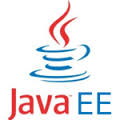also read: Java EE Tutorials EJB Interview Questions EJB 3 Web Services Annotation and Dependency Injection in EJB 3 Query API in EJB 3 deploy above two classes by archieving in a jar and copy it to deploy folder of jboss then run ur jboss server with url http://localhost:8080/jbossws there u will get all ur …
Java EE
How to delete a cookie on server in a J2EE application
There is no direct method offered by servlet API to delete a cookie on server side. This is how you can go about doing it. also read: Java EE Tutorials Servlets Interview Questions New Features in Servlets 3.0 Asynchronous Servlets in Servlets 3 Loop through the cookies in the request object to locate the one …
New Features in Servlet 3.0
Servlet 3.0 The next version for servlet technology is Servlet 3.0, which is planned to be released with JEE 6.0in the last quarter of 2008. After the release of servlet 2.5 in spetember 2005, this is the new version with many new features included. Servlet 2.5 is released with JEE 5.0. Servlet 3.0 is maintained …
What is servlet?
Java Servlets Java Servlet is the serverside Java programming language. We can say it as serverside applet. How applet is used for writing the client side code, servlet is used for writing the serverside programming language. Servlet programming is first created by Sun Microsystems in June 1997. The latest version is Servlet2.5 which is released …
EJB 3.0 and WebServices
This article discusses how an enterprise bean can act as a Web-Service component. Since Web-Services itself is a vast technology, the first part of the article discusses more about Web-Services. Specifically, the first part of the article discusses what Web-Services are, its unique features among other related technologies, its architecture, and the various base components …
Entity Beans in EJB(BMP)
ENTITY BEAN WITHBEAN-MANAGED PERSISTENCE Thus far, we acquainted ourselves with Sessionbeans ( both stateless & stateful) and also CMP Entity bean. also read: Java EE Tutorials EJB Interview Questions EJB 3 Web Services Annotation and Dependency Injection in EJB 3 Query API in EJB 3 In this instalment, we take up the most difficult type, …
Entity Beans in EJB(CMP)
Entity beans are characterized by the following 3 features. They are 'Persistent'. ( they are stored inhard-disk) They are shared by many clients. They have ,'Primary key'. also read: Java EE Tutorials EJB Interview Questions EJB 3 Web Services Annotation and Dependency Injection in EJB 3 Query API in EJB 3 As already mentioned ,Entity …
Java Security Packages using JCA/JCE
In this tutorial, the author explains the cryptography-related concepts and packages in JDK,with code examples.Many of the concepts and technical terms thus learnt will be useful in understanding the Cryptography API in MFCalso. There are three security-related packages in JDK1.4, as follows: JCA/JCE(Java Cryptography Architecture & JavaCryptography Extensions) JSSE( Java Secure-Sockets Extension). JAAS( Java Authentication &AuhorizationService) also read: …

